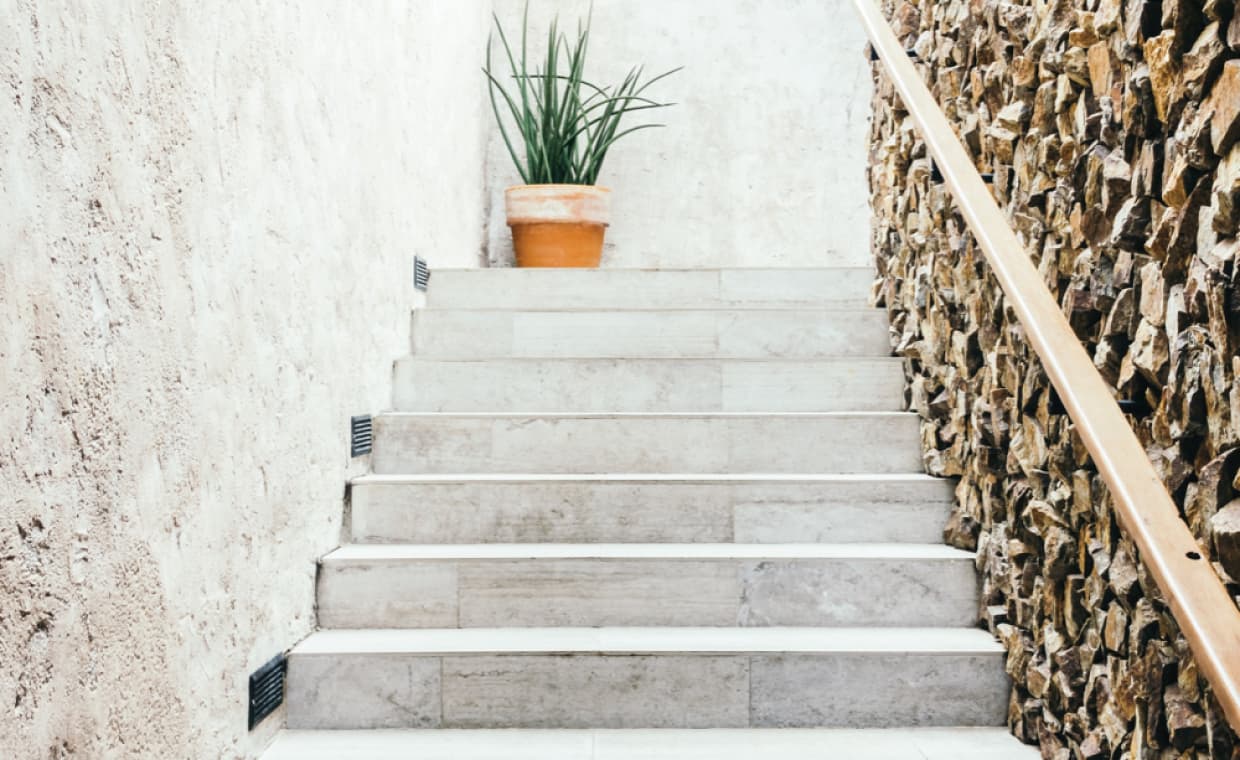
Table of Contents
Quick Summary
- Stone stairs designs are available for both indoor and outdoor spaces in a property.
- These stone stairs add style, strength, and elegance to any home decor.
- Popular stones for making stone stairs include marble, granite, limestone, sandstone, and slate.
- Outdoor stairs work well in gardens, porches, and walkways.
- Indoor stairs offer a luxurious, vintage, or modern look in home decor.
- Stair designs like floating steps, spiral forms, and wood-stone combos are widely appreciated.
- Stone stairs are durable and stylish structures. They can boost property value if properly constructed and maintained.
- Maintenance is easy and straightforward: You need to clean the stairs regularly, either with soap water or with pH-neutral cleaners.
Stone stair designs and patterns are elegant architectural décor elements that can be built both indoors and outdoors. Stone-built stairs are commonly seen in residential as well as commercial buildings, and they always offer a sense of luxury with their natural look and excellent durability.
Stone stairs offer versatile adaptability, and have the potential to match the style of modern, rustic, and luxurious homes alike. No matter where the stone stairs are built, they introduce charm, texture, aesthetics, and a unique sense of solidity.
Are you planning to explore more details about luxury stone stairs? Let’s start with some outdoor and indoor staircase ideas, followed by a look at popular stone varieties for staircases and essential stone stair maintenance tips.
Outdoor Stone Stair: A Few Creative Ideas
Outdoor stone stairs designs improve functionality and also add charm and structure to your property. Whether it’s a garden path or a front entrance, consider the following ideas for building stone stairs:
1. Garden Steps with Natural Stone Slabs

Use irregular-shaped stones set into grass or gravel for a relaxed, organic look. Sandstone steps are a popular choice in large garden décor. sandstone steps for garden adds a vintage charm and elegance.
2. Symmetrical Front Porch Stairs in Granite or Sandstone
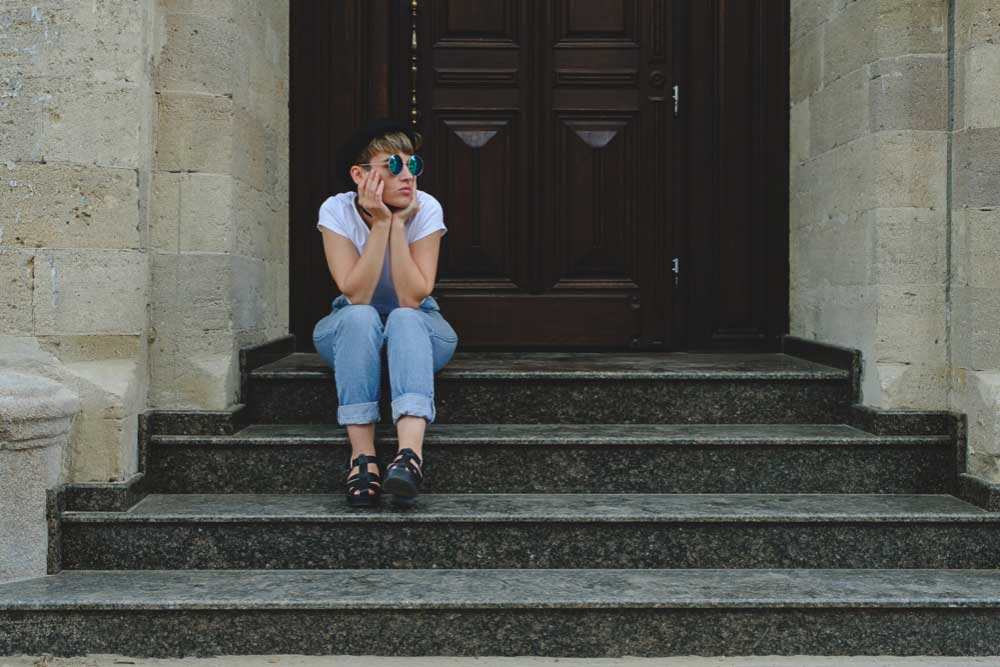
Create an elegant, formal entrance with wide stairs complemented by flanking planters or lanterns. This is one of the best granite stairs designs found globally. Front door granite steps are not only visually appealing but also easy to maintain, climate-friendly, and anti-skid.
3. Rustic Backyard Pathways

Combine textured stones with creeping plants or moss to create a worn-in, enchanted feel along garden walkways. These outdoor stone steps look good and also offer anti-skid benefits if maintained well.
4. Stone and Wood Combination
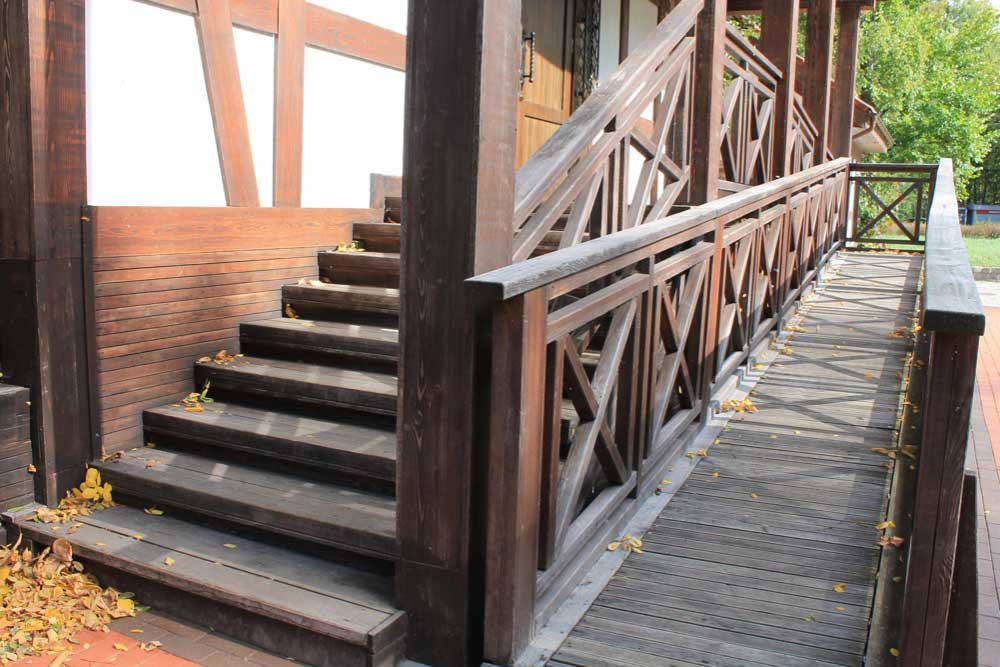
Use stone for treads and wood for risers or handrails to balance warmth and strength in outdoor stone stairs designs.
5. You may add a few Decorative Features

Place potted plants, solar lights, or water features alongside stone stairs to elevate their visual appeal.
Outdoor stairs and outdoor stone steps should also be climate-friendly and designed with proper drainage arrangements. It will prevent the risk of skidding or unwanted water damage.
Indoor Stone Stair Design Ideas
Stone stair designs inside the home serve a dual purpose. Primarily, it is a functional structure, and secondly, the structure adds a bold design statement to a home décor plan. Here are some unique ideas to inspire you to build an indoor stone staircase with elegant designs and structural patterns.
1. Grand Spiral Staircase in Marble or Granite
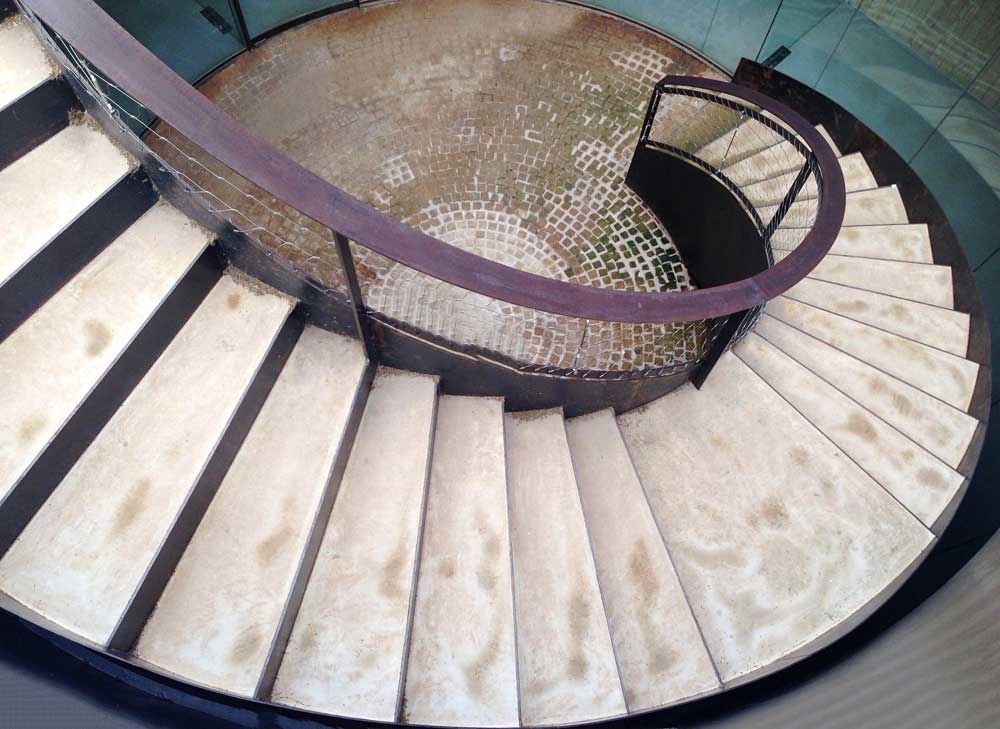
For a luxurious lobby or living area, a sweeping spiral staircase built in polished stone can serve as a dramatic centrepiece. Marble stone stairs in a spiral pattern add elegance and a regal touch to the home décor plan.
2. Floating Stone Steps with Glass Railings

Combine the heaviness of stone with the lightness of glass for a stunning modern contrast in your floating stone staircase designs.
3. Minimalist Limestone Steps with Wooden Accents

You may try using limestone treads on a wooden staircase frame for a soft, contemporary look in stone stair designs. This style was quite prevalent in Haveli-type structures in Rajasthan, India.
4. Rustic Entry Staircases Indoor

Rough-finished sandstone or slate steps can create a warm, earthy vibe in homes with exposed brick walls, wood beams, or neutral décor. These unique stone stair designs were often found in vintage home décor plans, but they have also become a popular choice in contemporary interiors these days.
5. Lighting for Indoor Stone Stairs

Add LED strip lights along stair edges or under floating steps to enhance the drama and safety at night. This serves as an embellishment to your stone stair designs and patterns.
6. Wall Pairing Tips
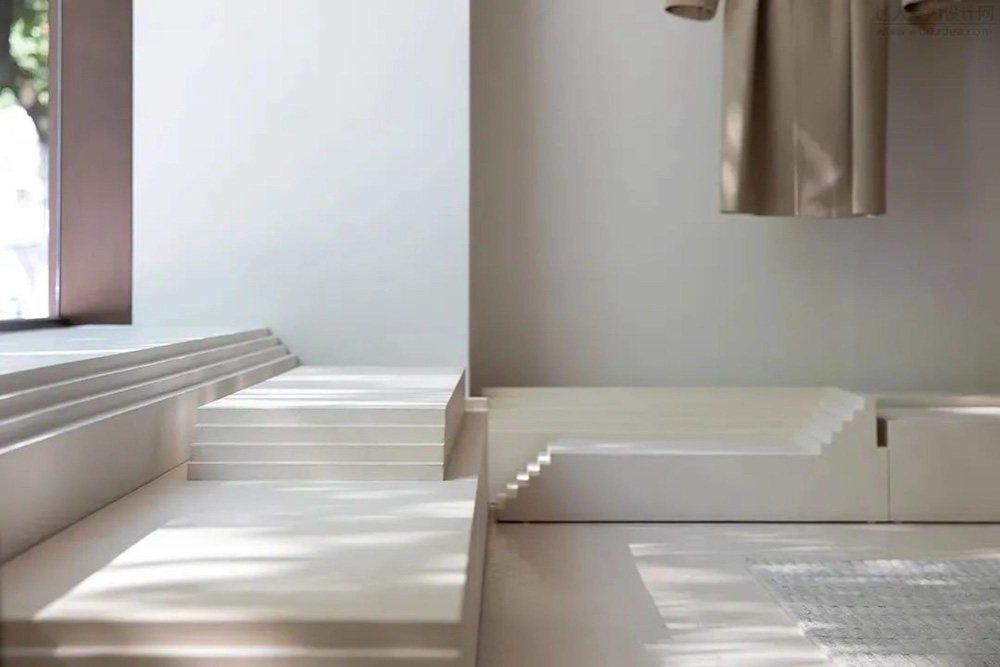
Neutral-coloured walls let the texture of the stone stand out. Consider white, cream, or soft greys for a classic backdrop.
Types of Stones Used in Constructing Stone Stairs
Stone is the basic material for building both indoor and outdoor stone stairs. It therefore makes sense to choose the most appropriate natural stone for your stone staircase design. The selection of the stone determines the look, strength, and maintenance needs of the stairs. Below are some of the most popular stone options you can consider for building staircases according to your plan.
1. Marble Stone
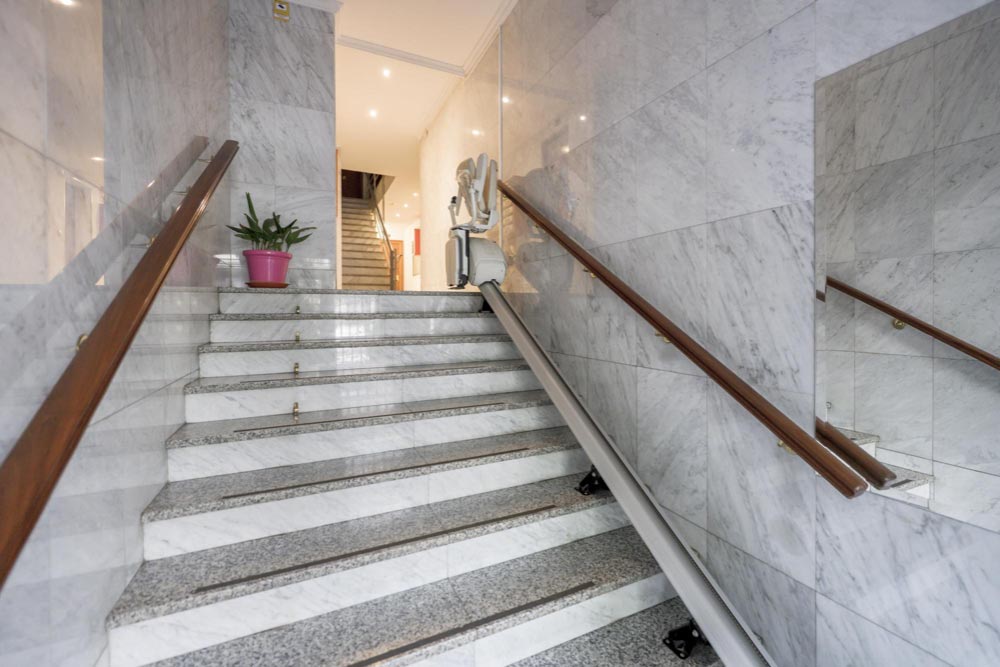
- These stones are the best suited for indoor staircases.
- They are known for their smooth finish, rich, and natural patterns.
- The variety of stones is available in classic shades like white, grey, and dark green.
- A marble staircase design can add a touch of elegance to interiors.
- The stone requires sealing and gentle cleaning.
2. Granite Stone
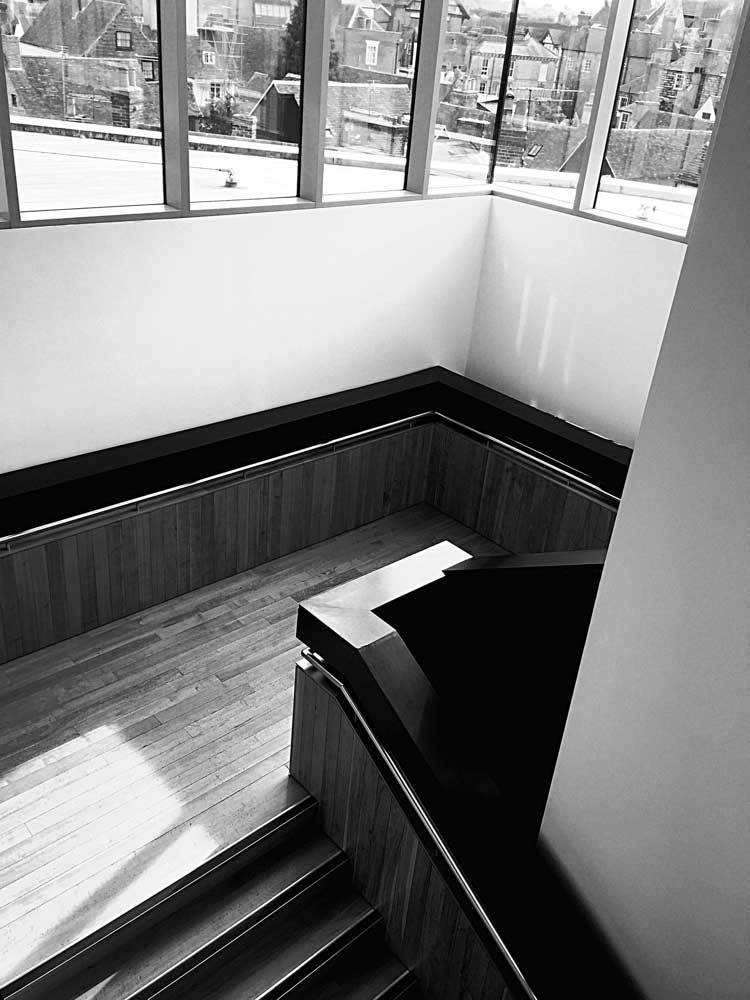
- Granite is perfect for indoor and outdoor use.
- The stone is tough and resistant to scratching and staining.
- It is available in black, pink, grey, and speckled tones.
- It matches modern settings.
3. Lime Stone
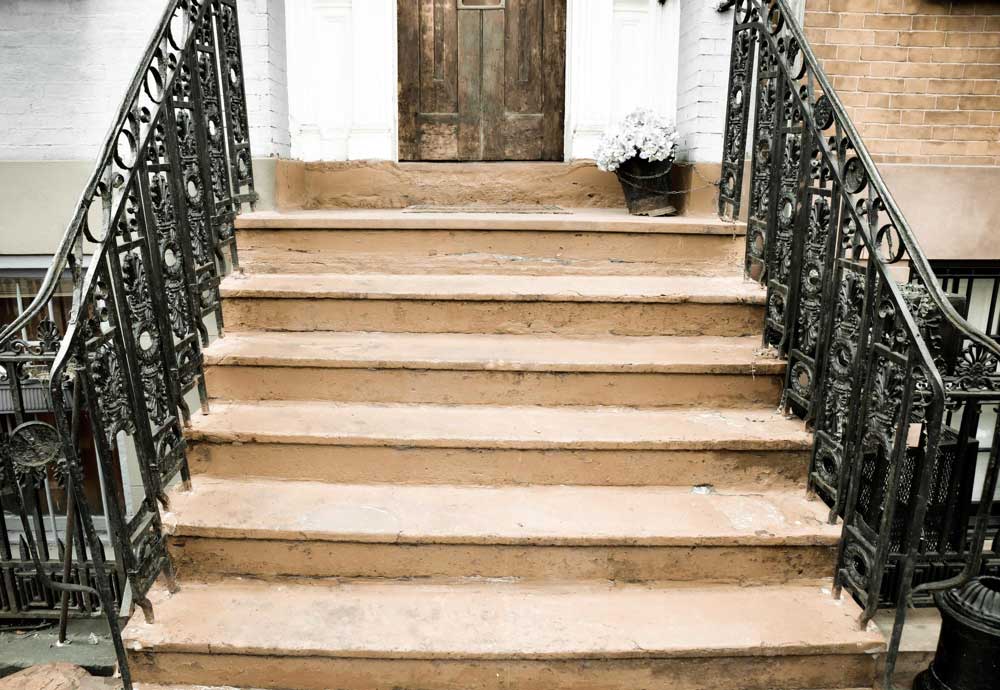
- Limestone is gifted with a warm, natural look, and it comes with muted beige and grey tones.
- Softer than granite or marble, limestone is suitable for use in light-duty indoor stairs.
- Ideal for rustic and Mediterranean-style homes.
4. Sand Stone

- Sandstone offers an earthy and textured look, providing a unique charm.
- Sandstone is popularly used in outdoor landscaping, like stairs, patios, and garden paths.
- Sandstone is excellently weather-friendly.
5. Slate Stone

- Slate stones are dark in tone and create a unique textured surface.
- The stone offers excellent slip resistance, a valuable feature for stair climbing.
- The stone is perfect for contemporary interior decor.
Each stone variant brings its own unique style and maintenance needs, so it is always wise to select the most appropriate stone variety that suits your desired style, usage, and climate, aligning your stone stair building plan.
The Common Reasons to Select Stone Stairs for Home Décor
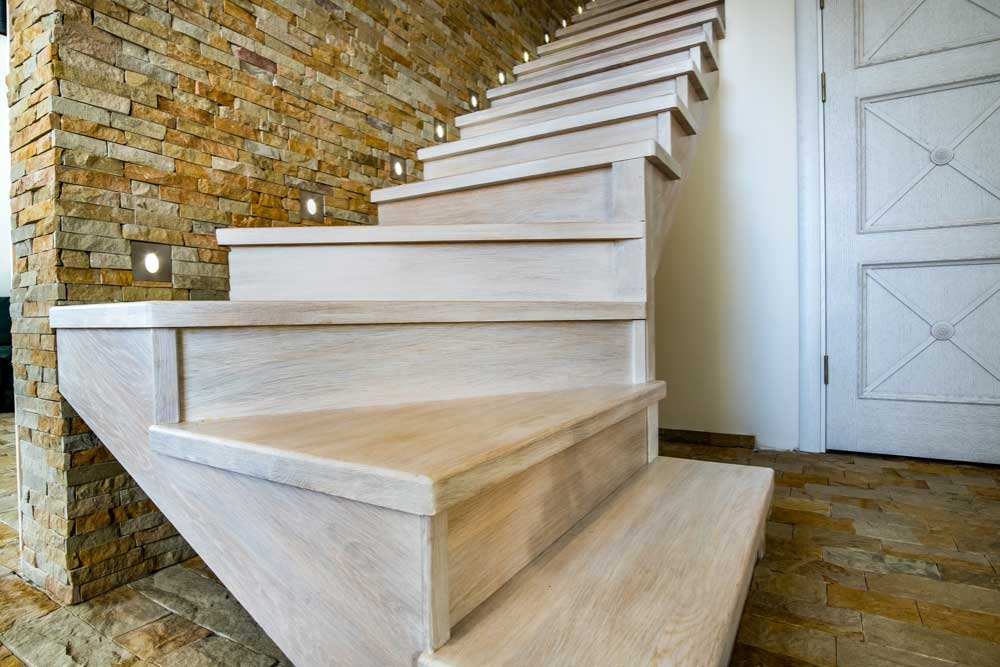
There are several reasons behind stone becoming a favoured building material for crafting stone stairs designs for decades. Besides aesthetics, stone integrates both function and timeless appeal. Here are a few reasons why stone stairs are worth considering:
- Natural Elegance: Stone is a timeless and attractive building material. Having a stone structure in a home adds rich texture and natural, earthy vibes.
- Durability: Stone can withstand heavy foot traffic, weather impacts, and daily wear without losing its visual appeal.
- Low Maintenance: Most stone structures are easy to clean and require minimal upkeep.
- Versatile Styling: Stone stairs offer excellent versatility, ranging from minimalist modern to vintage or traditional styles. They beautifully complement different architectural designs.
- Property Value Boost: A well-constructed stone staircase is a long-term investment. It not only looks aesthetically pleasing but also significantly increases its resale value.
How to Maintain Stone Stairs?

Although stone as a construction material is revered for its outstanding durability, it may still require maintenance. Here, Gharpedia has summarised a few general maintenance tips for the stone stairs in your house, whether it is indoor or outdoor.
1. Clean Regularly
- You should sweep daily to remove dust and dirt
- . It is necessary to wipe the stairs with a damp cloth or mop.
- Always use pH-neutral cleaners only.
2. Protect From Water Damage
- Ensure water drains away from the stairs
- Wipe off spills or rainwater quickly
- Apply a waterproof sealant every one or two years
3. Seal The Surface
- Always use a good quality stone sealant for the stone surface protection
- Do not forget to reseal high-traffic areas every 12–18 months
- Natural stones like granite, marble, etc., may need sealing support more frequently to maintain their sheen and shine.
4. Keep an Eye on Cracks and Chips
- Inspect frequently for visible damage
- If you find small cracks, immediately fill them with stone epoxy.
- If there are any broken or loose stones, replace them immediately.
5. Remove Stains Carefully
- Use a baking soda paste for removing an oil stain
- Use stone-safe rust removers only.
- Do not use steel wool or harsh scrubbers for stain removal.
6. Restrict Heavy Impacts
- Do not drag heavy items over the stone stairs.
- If there is any furniture placed on the stone stairs, always use protective pads under the furniture.
7. Keep Moss and Algae Away
- Scrub gently with soapy water to remove moss or algae stains
- . Always apply bleach-free anti-moss solutions to maintain its pristine beauty.
- You need to clean outdoor stairs more frequently to maintain their sheen and shine.
8. Always Handle Winter Care Properly
- Avoid salt-based de-icing products
- Use a plastic shovel for snow removal
- Apply safe ice melt options for the stone
9. Hire Professional Help If Needed
- Schedule a deep cleaning of the stone stairs once a year
- Only Professionals can reseal and polish safely
Conclusion
A stone stair brings elegance to any home and its design can significantly increase property value. They suit both modern and traditional spaces. The natural texture adds warmth and charm. A wide range of stone options are available, and you can select a match for any architectural style. A stone stair is robust, long-lasting, and visually elegant. With proper care, they can look new for years, making them a smart and beautiful choice for home décor.
Also Read: Best Location of Stairs in House | Inside or Outside
FAQs on the Stone Stairs in the Home
1. How Long Do Stone Steps Last?
Stone steps can last for decades, but their durability depends on the type of stone used. For example, granite and marble are more durable than limestone, sandstone, and slate, which are more prone to weathering and cracking. Heavily used steps wear down over time, and those in cold or wet climates are more likely to crack or erode.
2. How can we maintain the Stone Stairs to keep them safe?
It is essential to clean the stairs regularly, as this removes dust and moisture that often increases the risk of slipping. For outdoor staircases, proper drainage is a vital arrangement. It prevents the problem of water buildup during rain. In a damp or humid climate, using a stone-safe spray can further enhance the safety of stair users.
3. Are There Any Disadvantages of Stone Stairs?
Yes, there are a few disadvantages of stone stairs. For example:
- High upfront cost is a primary disadvantage of installing a stone stair structure. Natural stone is costlier than ceramic structures.
- The bulkiness of stone makes logistics and installation challenging.
- A stone structure requires specific care to remain resilient for decades against climatic impact and its aesthetic beauty. The maintenance can be costly for the property owners.
4. Should We Seal the Stone Steps of a Stone Stair?
Yes, unsealed stones become vulnerable to damage and may require frequent repairs. It is wise to apply a protective sealer because it helps ensure durability and preserve the structure. Stone steps usually last a long time; however, improper sealing can lead to damage over the years.
Reference
K. Raju, S. Ravindhar, (2021) in Detailed review on natural stone materials in architecture in Materials Today: Proceedings, Volume 45, Part 7, 2021, Pages 6341-6347, https://doi.org/10.1016/j.matpr.2020.10.842 [Online], Available from https://www.sciencedirect.com/science/article/abs/pii/S2214785320384790
Miguel Gomez-Heras, Stephen McCabe (2015) in Weathering of stone-built heritage: A lens through which to read the Anthropocene, in Anthropocene Volume 11, September 2015, Pages 1-13, https://doi.org/10.1016/j.ancene.2015.12.003 [Online] Available from https://www.sciencedirect.com/science/article/abs/pii/S2213305415300266






























